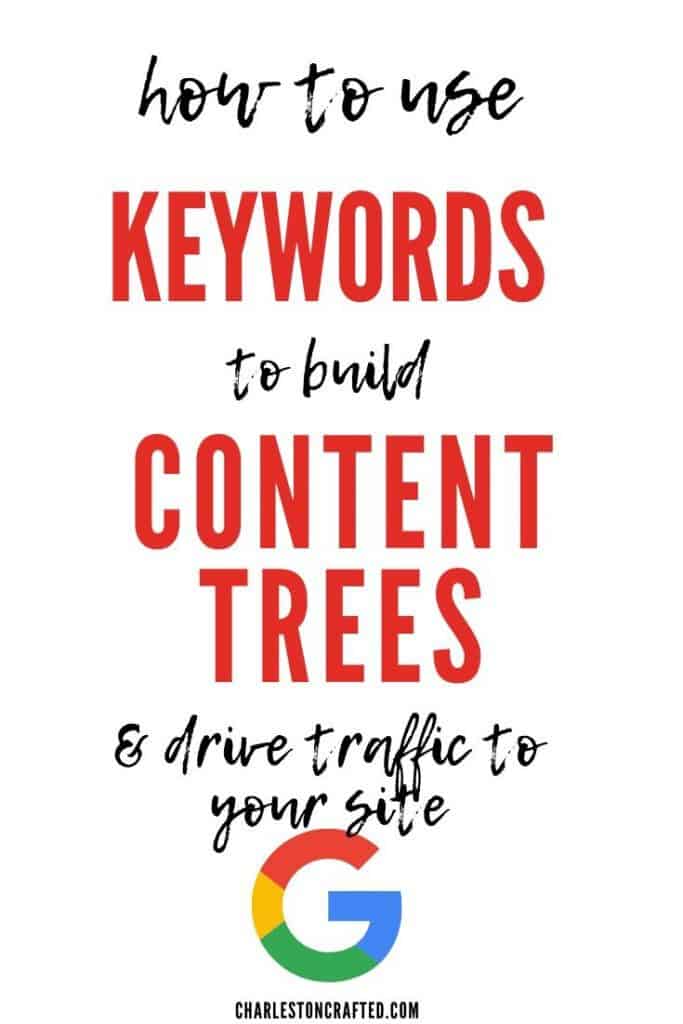So, you've found a list of keywords that you want to target with your blog post or website page. Now what?
This is a part of the SEO process that I feel like is often overlooked. How do you use SEO keywords to improve your existing posts and decide on what content to write next?
Today I am going to chat with you about content trees and how they are a powerful way to build authority with Google and therefore rank higher and drive more traffic to your site.
Need help finding keywords to begin with? Here are all of my favorite free keyword research tools!

What is a content tree?
A content tree is basically a grouping of relevant content. You're going to write a bunch of content that all goes together in the hopes of "owning" that space.
How do I start a content tree?
You want to start with one really big post. This post should have the broadest keyword and be very long and detailed.
In this post you can include the keywords from your keyword research in a variety of ways:
- Title of the post
- SEO meta description for the page
- Subheaders within the post
- Bolded words and phrases within paragraphs
- FAQs at the bottom of your post
- Hyperlinked text within your post linking to relevant content
- Alt text descriptions on images
Now, publish that post to your site.
If this is a post that you really want to rank for, you need more than one post on that topic. Having lots of posts tells Google that you know a lot on that topic, and therefore gives you authority.
Just be sure they are all helpful and relevant posts. Google is smart and won't be fooled by BS.
So pick some of your best additional key words - maybe longer or more specific, maybe questions verbatim from Google, maybe FAQs from your main post.
Turn each of those keywords into a blog post.
They don't have to be 1,000 words long, but give as much detail as possible. Answer the question that readers are looking for when they search that phrase.
These posts are the branches of your content tree.
Each branch needs to hyperlink back to the main post. The main post should in turn link to each branch.
For bonus points, once you have a lot of branches, go back and be sure they all link to each other, using relevant keywords as the text that you hyperlink.
Can you see how this helps to build you authority as an expert on this topic?
Once you have a ton of content, consider combining it all to create an eBook and selling that or giving it away as a freebie on all of your relevant posts!
Want more help getting started with keyword research?
Sign up for my Simple SEO Keyword Research Course!
Here are all of my favorite free keyword research tools!
Check out my post on how to use Pinterest for keyword research!
Check out my post on how to use YouTube for keyword research!
Looking for something?
We've been doing this since 2012 so we have a LOT of blog posts!
Search stuff like: Ceiling Projects | DIY Plant Stands | Thrift Flips


Hey there, I'm Sean, the woodworking enthusiast and builder behind CharlestonCrafted.com! Since 2012, I've been sharing the magic of turning raw materials into beautiful creations. I love teaching others the art and satisfaction of woodworking and DIY. I try to inspire fellow crafters to make something extraordinary out of nothing at all.





